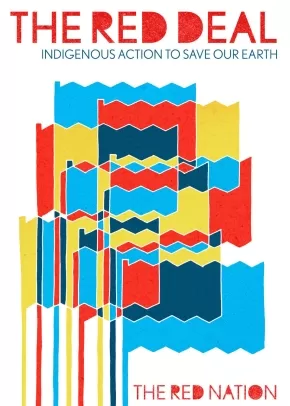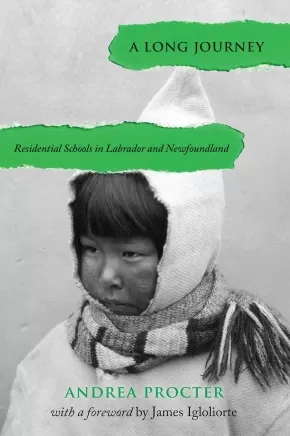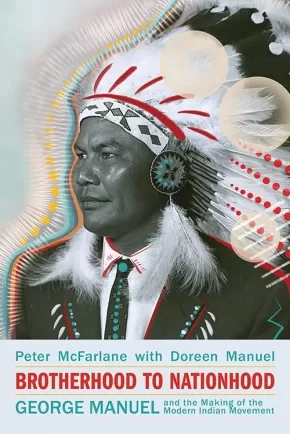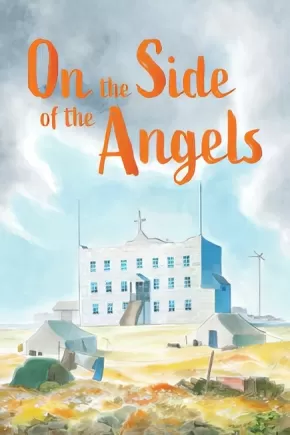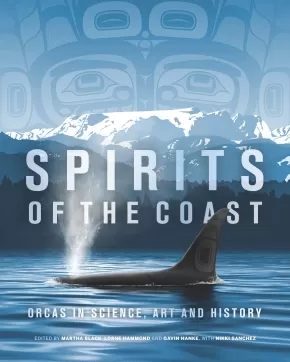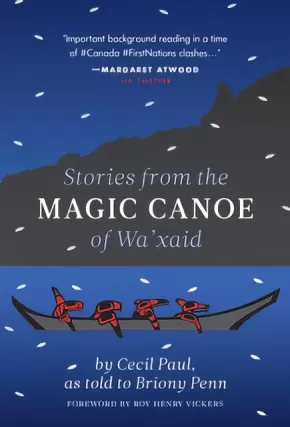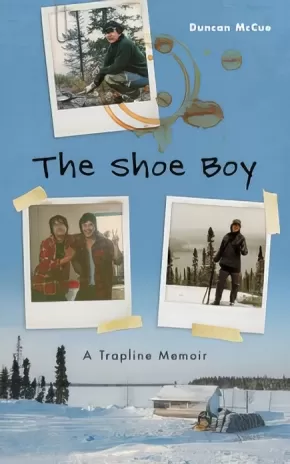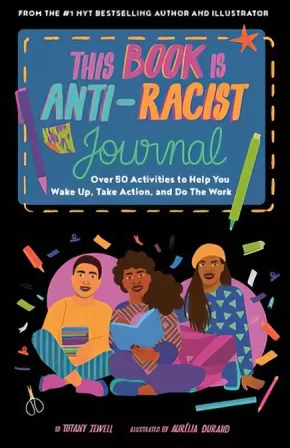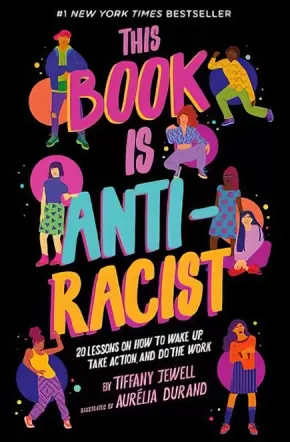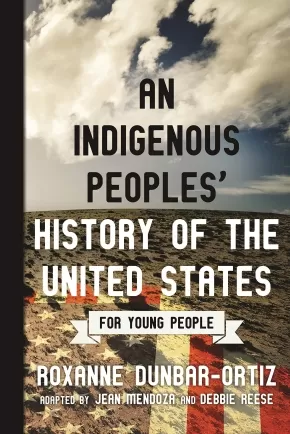
Social Studies
121
-
135
of
278 Results;
Sort By
Go To
of 19
The Red Deal: Indigenous Action to Save Our Earth
$22.95
Format:
Paperback
Text Content Territories:
Indigenous American; Native American;
Grade Levels: 12; University/College;
ISBN / Barcode: 9781942173434
Synopsis:
Synopsis:
When the Red Nation released their call for a Red Deal, it generated coverage in places from Teen Vogue to Jacobin to the New Republic, was endorsed by the DSA, and has galvanized organizing and action. Now, in response to popular demand, the Red Nation expands their original statement filling in the histories and ideas that formed it and forwarding an even more powerful case for the actions it demands.
One-part visionary platform, one-part practical toolkit, the Red Deal is a platform that encompasses everyone, including non-Indigenous comrades and relatives who live on Indigenous land. We—Indigenous, Black and people of color, women and trans folks, migrants, and working people—did not create this disaster, but we have inherited it. We have barely a decade to turn back the tide of climate disaster. It is time to reclaim the life and destiny that has been stolen from us and riseup together to confront this challenge and build a world where all life can thrive. Only mass movements can do what the moment demands. Politicians may or may not follow--it is up to them--but we will design, build, and lead this movement with or without them.
The Red Deal is a call for action beyond the scope of the US colonial state. It’s a program for Indigenous liberation, life, and land—an affirmation that colonialism and capitalism must be overturned for this planet to be habitable for human and other-than-human relatives to live dignified lives. The Red Deal is not a response to the Green New Deal, or a “bargain” with the elite and powerful. It’s a deal with the humble people of the earth; a pact that we shall strive for peace and justice and a declaration that movements for justice must come from below and to the left.
Reviews
“The Red Nation has given us The Red Deal, an Indigenous Peoples’ world view and practice that leads to profound changes in existing human relations. Five hundred years of European colonialism, which produced capitalist economic and social relations, has nearly destroyed life itself. Technology can be marshaled to reverse this death march, but it will require a vision for the future and a path to follow to arrive there, and that is what The Red Deal provides.”—Roxanne Dunbar-Ortiz, author of An Indigenous Peoples’ History of the United States
"The Red Deal is an incendiary and necessary compilation. With momentum for a Green New Deal mounting, the humble and powerful organizers of The Red Nation remind us that a Green New Deal must also be Red—socialist, committed to class struggle, internationalist in orientation, and opposed to the settler-colonial theft of Indigenous lands and resources. Redistribution also requires reparations and land back. The Red Deal is a profound call to action for us all."—Harsha Walia, author of Undoing Border Imperialism and Border and Rule: Global Migration, Capitalism, and the Rise of Racist Nationalism
“We really need The Red Deal because it forces open a critical conversation on how Land Back can be a platform for mass mobilization and collective struggle. The Red Deal poignantly argues that if we do not foreground decolonization and Indigenous liberation in climate justice strategies such as the Green New Deal, we will reproduce the violence of the original New Deal that dammed life-giving rivers and further dispossessed Indigenous peoples of their lands. Strategically, The Red Deal shows how, if we understand green infrastructure and economic restructuring as anticolonial struggle, as well as an anticapitalist, we can move from reforms that deny Indigenous jurisdiction towards just coalitions for repossession that radically rethink environmental policy and land protection without sacrificing Indigenous life and relations.”—Shiri Pasternak, author of Grounded Authority: The Algonquins of Barriere Lake Against the State
“The Red Deal asserts that the fight for climate justice must center Native people when it comes to the issues that disproportionately impact Native communities, but it also communicates what the Green New Deal does not — namely, that public lands are stolen lands and climate change is significantly caused by just a few industries, which the government has at worst neglected to hold accountable and at best assisted in their efforts to mine the earth for resources in a move that put profits over people.” —Teen Vogue
“For the Red Nation, living and being interdependent with Mother Nature is explicitly anticapitalist. An ethos merely hinted at in the Green New Deal, The Red Deal understands that capitalism fundamentally protects wealth, not life”—The Politic
“The Red Nation also names Black abolitionists as an inspiration for the Red Deal, citing the links between mass incarceration and detention and climate change. They further note that police departments, prisons, and the U.S. military receive billions of taxpayer dollars annually while doing irreparable harm to Native Americans, Black people, and the Earth.” —Essence
Educator Information
Excerpt from the book:
The Red Deal begins with the oldest yet often forgotten struggle on this continent: ending the occupation. While usually erased from the history of this nation, settler colonial occupation has fundamentally shaped the development of the United States and indeed the world that it dominates economically and politically. Ending the occupation links those of us in the seat of empire with those who face its weapons, soldiers, and policies around the world. Together we share the common enemy of US imperialism, and Indigenous people here have fought against it since the first settlers began to occupy our lands by force. It is important to remember that the very first act of US imperialism was the military and settler incursions on Indigenous land as the fledgling colonies expanded westward. This is why we begin with ending the occupation.
The struggle against occupation on this continent has remained strong throughout history and continues to this day. We’ve seen this in the global uprisings led by Black relatives who have been resisting the colonization of Africa and the enslavement and oppression of African people stolen to work on this continent for centuries. The uprisings during the summer of 2020, even with the global COVID-19 pandemic, built upon the decades of Black resistance to police violence and the everyday brutality of American society towards Black people, and exploded into some of the largest mobilizations in US history. The spread of uprisings throughout cities across the country was also marked by the sharpening of tactics and clarity of the roots of the issues, with images of burnt down police precincts and flipped cop cars evoking memories of Black and Indigenous resistance to slave plantations and frontier forts. Calls for abolition of police and prisons arose with renewed volume, stretching forward from a long history of abolitionist struggle.
It is important that we continue nurturing these histories and movements of struggle against occupation on these lands and continue to build relationships with others globally who face the violence of occupation. We begin with addressing those things that act as obstacles to our collective liberation: the prisons and detention centers filled with our family members; the police officers and prison guards who stand between us and the capitalist interests they defend; and the military, police, and vigilantes who murder our relatives. As we know, colonial occupation is upheld by constant threats of violence and in many instances, actual violence. It is therefore no surprise that these obstacles to our life and wellbeing that employ violence in order to maintain the occupation, receive the largest proportions of resources by the US settler state. We seek to dismantle these institutions that get in our way of living good lives, and we aim to divert resources away from them through divestment.
This is just the first step, though. It is not enough to be against any one thing, even something as big, evil, and all-encompassing as colonial occupation. Ending the occupation gives us the space to breathe and envision other possibilities that we are for, and we must be clear about what we are for. We are for Indigenous life, for the life of all human and other-than-human beings. And in order to live good lives, we must heal ourselves from the destruction caused by colonialism and capitalism by stopping what harms us and desecrates our land and begin to build what will sustain us.
Additional Information
144 pages | 5.00" x 7.00" | b&w illustrations
Authenticity Note: The Red Nation is a coalition of Native and non-Native activists, educators, students, and community organizers advocating Native liberation. The Red Deal was written collectively by members of the Red Nation and the allied movements and community members who comprised the Red Deal coalition. Everyone from youth to elders; from knowledge keepers to farmers contributed to the creation of The Red Deal. It's up to readers to determine if this title works as an authentic resource for their purposes
Where the Power Is: Indigenous Perspectives on Northwest Coast Art
$65.00
Format:
Hardcover
Text Content Territories:
Indigenous Canadian;
Reading Level: N/A
ISBN / Barcode: 9781773270517
Synopsis:
Synopsis:
Where the Power Is: Indigenous Perspectives on Northwest Coast Art is a landmark volume that brings together over eighty contemporary Indigenous knowledge holders with extraordinary works of historical Northwest Coast art, ranging from ancient stone tools to woven baskets to carved masks and poles to silver jewellery. First Nations Elders, artists, scholars, and other community members visited the Museum of Anthropology at the University of British Columbia to connect with these objects, learn from the hands of their ancestors, and share their thoughts and insights on how these belongings transcend the category of “art” or “artifact” to embody vital ways of knowing and being in the world. Texts by the authors sketch the provenance of the objects, and, in dialogue with the commentators, engage in critical and necessary conversations around the role of museums that hold such collections.
The voices within are passionate, enlightening, challenging, and humorous. The commentators speak to their personal and family histories that these objects evoke, the connections between tangible and intangible culture, and how this “art” remains part of Northwest Coast Indigenous peoples’ ongoing relationships to their territories and political governance. Accompanied by over 300 contemporary and historical photographs, this is a vivid and powerful document of Indigenous experiences of reconnection, reclamation, and return.
Featuring contributions by:
ʼLiyaaʼmlaxha—Leonard Alexcee, Goldʼm Nitsʼk—Wii Gandoox—Mona Alexcee, Widiimas—Peter Alexcee, Kʼodalagalis—Byron Alfred, Skwiixta—Karen Anderson, Chaudaquock—Vera Asp, Don Bain, Stan Bevan, Jo Billows, Dempsey Bob, Raymond Boisjoly, Naxshageit—Alison Bremner, Wákas—Irene Brown, Tʼaakeit Gʼaayaa—Corey Bulpitt, Vanessa Campbell, Jisgang—Nika Collison, Nalaga—Donna Cranmer, Gloria Cranmer Webster, Joe David, Guud san glans—Robert Davidson, ʼWalas Gwaʼyam—Beau Dick, Idtaawgan—Mervin Dunn, Sharon Fortney, Yéil Ya-Tseen—Nicholas Galanin, qiyəplenəxw—Howard E. Grant, sʔəyəłəq—Larry Grant, taχwtəna:t—Wendy Grant-John, Müsiiʼn—Phil Gray, Tʼuuʼtk—Robin R.R. Gray, Wii Gwinaał—Henry Green, secəlenəxw—Morgan Guerin, Haaʼyuups, KC (Kelsey) Hall, J̌i:ƛʼmɛtəm—Harold Harry, qoqʼwɛssukwt—Katelynn Harry, 7idansuu—James M. Hart, YaʼYa Heit, Kwakwabalasamayi Hamasaka—Alan Hunt, Corrine Hunt, Tłaliłilaʼogwa—Sarah Hunt, Tsēmā Igharas, Pearl Innis, Haʼhl Yee—Doreen Jensen, Kwankwanxwaligi—Robert Joseph, kwəskwestən—James Kew, Gigaemi Kukwits, Peter Morin, Nugwam ʼMaxwiyalidzi—Kʼodi Nelson, ʼTayagilaʼogwa—Marianne Nicolson, Gwiʼmolas—Ryan Nicolson, Jaad Kuujus—Kwaxhiʼlaga—Meghann OʼBrien, Ximiq—Dionne Paul, A-nii-sa-put—Tim Paul, Xwelíqwiya—Rena Point Bolton, Oqwiʼlowgʼwa—Kim Recalma-Clutesi, Skeena Reece, Nʼusi—Ian Reid, Greg A. Robinson, Siʼt Kwuns—Isabel Rorick, Maximus (Max) Savey, Anaht pi ya tuuk—Sheila Savey, Linda Smith, Xsim Ganaaʼw—Laurel Smith Wilson, θəliχwəlwət—Debra Sparrow, səlisəyeʔ—Leona Sparrow, Wedłidi Speck, Marika Echachis Swan, Simʼoogit Gawaakhl of Wilps Luuyaʼas—Norman Tait, Snxakila—Clyde Tallio, Nakkita Trimble, Xˇùsəmdas Waakas—Ted Walkus, Nuuwagawa—Evelyn Walkus Windsor, Hiłamas—William Wasden, Jr., Tsamiianbaan—William White, Tania Willard, Skiljaday—Merle Williams, Gid7ahl-Gudsllaay Lalaxaaygans—Terri-Lynn Williams-Davidson, Tʼɬaɬbaʼlisameʼ—Tʼɬalis—Mikael (Mike) Willie, Lyle Wilson, Nathan Wilson, and Michael Nicoll Yahgulanaas.
Additional Information
384 pages | 10.31" x 11.96" | Hardcover
A Long Journey: Residential Schools in Labrador and Newfoundland
$29.95
Format:
Paperback
Text Content Territories:
Indigenous Canadian;
ISBN / Barcode: 9781894725644
Synopsis:
Synopsis:
Left out of the national apology and reconciliation process begun in 2008, survivors of residential schools in Labrador and Newfoundland received a formal apology from the Canadian government in 2017. This recognition finally brought them into the circle of residential school survivors across Canada, and acknowledged their experiences as similarly painful and traumatic.
For years, the story of residential schools has been told by the authorities who ran them. A Long Journey helps redress this imbalance by listening closely to the accounts of former students, as well as drawing extensively on government, community, and school archives. The book examines the history of boarding schools in Labrador and St. Anthony, and, in doing so, contextualizes the ongoing determination of Indigenous communities to regain control over their children’s education.
Educator Information
This resource is recommended in the Canadian Indigenous Books for Schools 2020/2021 resource list as being useful for grades 10 to 12 for English Language Arts, Law, and Social Studies.
Caution: contains descriptions of mental, physical, and sexual abuse.
Additional Information
528 pages | 6.00" x 9.00"
Brotherhood to Nationhood: George Manuel and the Making of the Modern Indian Movement
$32.95
Format:
Paperback
Text Content Territories:
Indigenous Canadian; First Nations; Salish; Interior Salish; Secwepemc (Shuswap);
ISBN / Barcode: 9781771135108
Synopsis:
Synopsis:
Charged with fresh material and new perspectives, this updated edition of the groundbreaking biography From Brotherhood to Nationhood brings George Manuel and his fighting tradition into the present.
George Manuel (19201989) was the strategist and visionary behind the modern Indigenous movement in Canada. A three-time Nobel Peace Prize nominee, he laid the groundwork for what would become the Assembly of First Nations and was the founding president of the World Council of Indigenous Peoples. Authors Peter McFarlane and Doreen Manuel follow him on a riveting journey from his childhood on a Shuswap reserve through three decades of fierce and dedicated activism.
In these pages, an all-new foreword by celebrated Mi'kmaq lawyer and activist Pam Palmater is joined by an afterword from Manuel’s granddaughter, land defender Kanahus Manuel. This edition features new photos and previously untold stories of the pivotal roles that the women of the Manuel family played and continue to play in the battle for Indigenous rights.
Reviews
“Brotherhood to Nationhood is more than just a biography of the life of George Manuel; it demonstrates the roots of an Indigenous internationalism and political theory that is grounded in the ethics, knowledge, and practices of the Secwepemc people.” – Leanne Betasamosake Simpson, author of As We Have Always Done
Educator Information
Table of Contents
Foreword - Dr. Pamela Palmater
Preface - Peter McFarlane
Preface - Doreen Manuel
Part I. The Neck of the Chicken
1. Paradise, Paradise Lost, 1960
2. The Hard-Luck Shuswap Kid, 1920–1932
3. White Plague, Red Victims, 1932–1954
4. Local Agitator to Provincial Leader, 1955–1960
5. A Future for Your Children, 1960–1963
Part II. Building the National Movement
6. Community Development and the Arthur Laing Gang, 1965–1967
7. Down the Garden Path: Chretien Andras Consultations, 1968–1969
8. From White Paper to Red Paper, 1969–1970
9. The National Chief
10. The National Indian Philosophy, 1971–1972
Part III. Indian Shogun
11. International Travels
12. Land Title and the James Bay Battle, 1972–1973
13. Red Power
14. Political Eruptions in British Columbia, 1975
15. A Voice for the Fourth World, 1975–1976
16. Back to British Columbia,1976–1977
17. The Peoples’ Movement, 1977–1979
18. Constitutional Express, 1980
Part IV. Final Days
19. European Express, 1981–1982
20. Passing the Torch, 1982–1989
Epilogue
Afterword - Kanahus Manuel
Additional Information
402 pages | 6.00" x 9.00" | Revised, 2nd Edition
More Powerful Together: Conversations with Climate Activists and Indigenous Land Defenders
$26.00
Format:
Paperback
Text Content Territories:
Indigenous;
ISBN / Barcode: 9781773632261
Synopsis:
Synopsis:
How can social movements help bring about large-scale systems change? This is the question Jen Gobby sets out to answer in More Powerful Together. As an activist, Gobby has been actively involved with climate justice, anti-pipeline, and Indigenous land defense movements in Canada for many years. As a researcher, she has sat down with folks from these movements and asked them to reflect on their experiences with movement building. Bringing their incredibly poignant insights into dialogue with scholarly and activist literature on transformation, Gobby weaves together a powerful story about how change happens.
In reflecting on what’s working and what’s not working in these movements, taking inventory of the obstacles hindering efforts, and imagining the strategies for building a powerful movement of movements, a common theme emerges: relationships are crucial to building movements strong enough to transform systems. Indigenous scholarship, ecological principles, and activist reflections all converge on the insight that the means and ends of radical transformation is in forging relationships of equality and reciprocity with each other and with the land.
It is through this, Gobby argues, that we become more powerful together.
100% of the royalties made from the sales of this book are being donated to Indigenous Climate Action.
Educator Information
Table of Contents
Acknowledgments
Thinking Together About Changing Everything
The Climate and Inequality Crises in Canada
Understanding the Crises
Envisioning Alternatives
How We Get From Here to There
Taking Stock of Where We Are At and What Stands in Our Way
Overcoming the Barriers and Building More Powerful Movements
“We Get There Together, or We Don’t Get There at All”
Appendix
References
Index
Additional Information
266 pages | 6.00" x 9.00"
On the Side of the Angels
$12.95
Artists:
● Hwei Lim
Format:
Paperback
Text Content Territories:
Indigenous Canadian; Inuit;
ISBN / Barcode: 9781774502037
Synopsis:
Synopsis:
"Then one day a ‘flyable’ took me away from our world through the sky to a dark and desolate place.”
Jose Kusugak had a typical Arctic childhood, growing up playing games, enjoying food caught by hunters, and watching his mother preparing skins. But he was one of the first generation of Inuit children who were taken from their homes and communities and sent to live in residential schools. In this moving and candid memoir, Jose tells of his experiences at residential school and the lifelong effects it had on him.
Educator & Series Information
Recommended for ages 12 to 15.
Included in the Canadian Indigenous Books for Schools 2020/2021 resource list for grades 6 to 9 for Social Studies, Science, and English Language Arts.
A personal, real story that introduces young readers to the memoir genre.
Inhabit Education Books is proud to introduce Qinuisaarniq (“resiliency”), a program created to educate Nunavummiut about the history and impacts of residential schools, policies of assimilation, and other colonial acts that affected the Canadian Arctic.
Each resource in the program has been carefully written and reviewed to include level-appropriate opportunities for students to learn about colonial acts and policies that affected Inuit. Topics covered include the residential school system, relocations to settlements and the High Arctic, sled dog slaughters, the use of E and W numbers, and others. These acts and policies created long-lasting impacts on Inuit individuals and communities, which are still being felt today.
The resources in this program include personal interviews, testimony, and writing; non-fiction informational resources; and information about traditional Inuit practices.
Additional Information
56 pages | 9.00" x 6.00". | b&w illustrations
One Earth: People of Color Protecting Our Planet
$24.95
Format:
Paperback
Text Content Territories:
Indigenous;
ISBN / Barcode: 9781459818866
Synopsis:
Synopsis:
One Earth profiles Black, Indigenous and People of Color who live and work as environmental defenders. Through their individual stories, the book shows that the intersection of environment and ethnicity is an asset to achieving environmental goals. The twenty short biographies introduce readers to diverse activists from all around the world, who are of all ages and ethnicities. From saving ancient trees on the West Coast of Canada, to protecting the Irrawaddy dolphins of India, to uncovering racial inequalities in the food system in the United States, these environmental heroes are celebrated by author and biologist Anuradha Rao, who outlines how they went from being kids who cared about the environment to community leaders in their field. One Earth is full of environmental role models waiting to be found.
Reviews
“Thought-provoking reading for young people figuring out their own contributions. This valuable compilation shows that Earth’s salvation lies in the diversity of its people.”— Kirkus Reviews, starred review
“Rao shines a light on the too often unacknowledged role played by People of Colour in the green movement. This is a book to be celebrated and shared!”— Elizabeth May, former leader of the Green Party of Canada
“One Earth is so important today because it acknowledges the diversity of our environmental defenders and warriors and reminds us that the environment has no borders. Thank you, Anu, for identifying these amazing eco-champions. Their experience and dedication to making sure the environment is our number one priority is an invaluable gift to Canada and the world.”— Winnie Ming Yue Hwo, Senior Public Engagement Specialist, David Suzuki Foundation
Educator Information
Recommended for ages 12+
Contains 20 short biographies of Black, Indigenous and People of Color (BIPOC) in the environmental movement.
Offers a positive approach to environmental issues with a focus on environmental successes.
Written in a readable and accessible voice, One Earth presents diverse role models for youth and readers of all ages.
Keywords / Subjects / Themes: Black, Indigenous, and People of Color (BIPOC), environmentalists, changemakers, conversation, diversity, biographies, #ownvoices.
Text Content Territory Note: This book has received the Indigenous text content territory label because it contains some profiles of Indigenous environmental defenders, but not all people profiled in this work are Indigenous.
Additional Information
208 pages | 6.00" x 8.50"
Redbone: The True Story of a Native American Rock Band
$25.99
Artists:
Format:
Paperback
Text Content Territories:
Indigenous American; Native American; Shoshone; Indigenous Central American; Indigenous Peoples in Mexico; Yaqui (Yoeme);
ISBN / Barcode: 9781684057146
Synopsis:
Synopsis:
Experience the riveting, powerful story of the Native American civil rights movement and the resulting struggle for identity told through the high-flying career of West Coast rock 'n' roll pioneers Redbone.
You've heard the hit song "Come and Get Your Love" in the movie Guardians of the Galaxy, but the story of the band behind it is one of cultural, political, and social importance.
Brothers Pat and Lolly Vegas were talented Native American rock musicians that took the 1960s Sunset Strip by storm. They influenced The Doors and jammed with Jimmy Hendrix before he was "Jimi," and the idea of a band made up of all Native Americans soon followed. Determined to control their creative vision and maintain their cultural identity, they eventually signed a deal with Epic Records in 1969. But as the American Indian Movement gained momentum the band took a stand, choosing pride in their ancestry over continued commercial reward.
Created in cooperation of the Vegas family, authors Christian Staebler and Sonia Paoloni with artist Thibault Balahy take painstaking steps to ensure the historical accuracy of this important and often overlooked story of America's past. Part biography and part research journalism, Redbone tells a vivid story about this neglected chapter of American history.
Reviews
"Compelling reading for fans of roots rock and Native American history in middle school and up." —School Library Journal
"An entertaining, enlightening history for music fans. Balahy’s loose, energetic drawings; imaginative layouts; and playful use of color make everything pop." —Publishers Weekly
"Musicians with heart put their people before profits in an inspirational tale. Well-researched and well-paced, this book will introduce a new generation to the music and impact of Redbone." —Kirkus Reviews (Starred review)
"In some eyes, the guys in Redbone, still the most successful Native American rock band this country has produced, are indeed superheroes. Not all heroes wear capes, and some wear buckskin." —Houston Chronicle
"In the early sixties, Pat and his brother, Lolly, perform on the Sunset Strip, crossing paths with The Byrds, The Doors, and Jimi Hendrix, who gives the brothers the idea of forming 'an all Indian band. That'd make this country sit up.' The seed germinates and Redbone bursts forth. Staebler and Paoloni offer a lens onto aspects of the twentieth-century Native American struggle for civil rights and injustices like forced schooling and racist policing, as well as the 1968 birth of the American Indian Movement. Balahy's art is particularly splendid and well-varied in style for the complex subject matter." —Booklist
Additional Information
160 pages | 7.00" x 10.00"
Reflections from Them Days: A Residential School Memoir from Nunatsiavut
$12.95
Artists:
Editors:
Format:
Paperback
Text Content Territories:
Indigenous Canadian; Inuit;
ISBN / Barcode: 9781774502075
Synopsis:
Synopsis:
When Nellie Winters was 11 years old, she was sent to attend the Nain Boarding School, a residential school 400 kilometres from her home. In this memoir, she recalls life before residential school, her experiences at the school, and what it was like to come home.
Accompanied by the author’s original illustrations, this moving, often funny memoir sheds light on the experiences of Inuit residential school survivors in Labrador.
Educator & Series Information
Recommended for ages 11-14.
This book is recommended in the Canadian Indigenous Books for Schools 2020/2021 resource list for grades 5 to 7 for English Language Arts and Social Studies.
This book is part of the Qinuisaarniq (“resiliency”) program. This is a program created to educate Nunavummiut about the history and impacts of residential schools, policies of assimilation, and other colonial acts that have affected the Canadian Arctic.
Each resource has been carefully written and reviewed to include level-appropriate opportunities for students to learn about colonial acts and policies that have affected Inuit. These acts and policies created long-lasting impacts on Inuit individuals and communities, which are still being felt today.
The resources in this program include personal interviews, testimony, and writing; non-fiction informational resources; and information about traditional Inuit practices.
Additional Information
26 pages | 9.00" x 7.00" | Transcribed and edited by Erica Oberndorfer
Spirits of the Coast: Orcas in Science, Art and History
$29.95
Editors:
Format:
Hardcover
Text Content Territories:
Indigenous Canadian;
ISBN / Barcode: 9780772677686
Synopsis:
Synopsis:
An insightful collection exploring the plight, past and promise of the orca, powerful symbol of BC’s wild coast and apex predator of all oceans. Spirits of the Coast brings together the work of marine biologists, Indigenous knowledge keepers, poets, artists and storytellers, united by their enchantment with the orca. Long feared in Western cultures as “killer whales,” and respected and honoured by Indigenous cultures as friends, family or benefactors, orcas are complex social beings with culture and language of their own. With contributors ranging from Briony Penn to David Suzuki, Gary Geddes and Michael Nicoll Yahgulanaas, this collection brings together diverse voices, young and old, to explore the magic, myths, and ecology of orcas. A literary and visual journey through past and possibility, Spirits of the Coast illustrates how these enigmatic animals have shaped us as much as our actions have impacted them, and provokes the reader to imagine the shape of our shared future.
Educator Information
Includes Indigenous and non-Indigenous contributions.
Recommended in the Canadian Indigenous Books for Schools 2020/2021 resource list for grades 9 to 12 for English Language Arts, Law, Social Studies, Social Justice, Science.
Additional Information
192 pages | 8.00" x 10.00"
Stories from the Magic Canoe of Wa'xaid (PB)
$25.00
Format:
Paperback
Text Content Territories:
Indigenous Canadian; First Nations; Haisla (Kitamaat); Xenaksiala (Henaksiala);
ISBN / Barcode: 9781771603379
Synopsis:
Synopsis:
A remarkable and profound collection of reflections by one of North America’s most important Indigenous leaders.
My name is Wa’xaid, given to me by my people. ‘Wa’ is ‘the river’, ‘Xaid’ is ‘good’ – good river. Sometimes the river is not good. I am a Xenaksiala, I am from the Killer Whale Clan. I would like to walk with you in Xenaksiala lands. Where I will take you is the place of my birth. They call it the Kitlope. It is called Xesdu’wäxw (Huschduwaschdu) for ‘blue, milky, glacial water’. Our destination is what I would like to talk about, and a boat – I call it my magic canoe. It is a magical canoe because there is room for everyone who wants to come into it to paddle together. The currents against it are very strong but I believe we can reach that destination and this is the reason for our survival. —Cecil Paul
Who better to tell the narrative of our times about the restoration of land and culture than Wa’xaid (the good river), or Cecil Paul, a Xenaksiala elder who pursued both in his ancestral home, the Kitlope — now the largest protected unlogged temperate rainforest left on the planet. Paul’s cultural teachings are more relevant today than ever in the face of environmental threats, climate change and social unrest, while his personal stories of loss from residential schools, industrialization and theft of cultural property (the world-renowned Gps’golox pole) put a human face to the survivors of this particular brand of genocide.
Told in Cecil Paul’s singular, vernacular voice, Stories from the Magic Canoe spans a lifetime of experience, suffering and survival. This beautifully produced volume is in Cecil’s own words, as told to Briony Penn and other friends, and has been meticulously transcribed. Along with Penn’s biography of Cecil Paul, Following the Good River, Stories from the Magic Canoe provides a valuable documented history of a generation that continues to deal with the impacts of brutal colonization and environmental change at the hands of politicians, industrialists and those who willingly ignore the power of ancestral lands and traditional knowledge.
Reviews
“The Magic Canoe brings peace to one’s soul. It is a warm wind moving our hearts. Wa’xaid takes us on a journey that regenerates and empowers us. T’ismista, the stone hunter, looks down on the Magic Canoe and reminds us to listen to storytellers like Cecil Paul. This is a story for the family of man; we are all in the canoe together and our stories need to be shared with each other.” – Roy Henry Vickers
Educator Information
Recommended in the Canadian Indigenous Books for Schools 2019-2020 resource list, as well as the 2020-2021 resource list, for grades 9 to 12 for English Language Arts, Social Studies, and Science.
Additional Information
224 pages | 5.00" x 7.00" | Paperback
The Shoe Boy: A Trapline Memoir
$19.95
Format:
Paperback
Text Content Territories:
Indigenous Canadian; First Nations; Anishinaabeg; Cree (Nehiyawak); James Bay Cree;
ISBN / Barcode: 9780774880572
Synopsis:
Synopsis:
At the age of seventeen, an Anishinabe boy who was raised in the south joined a James Bay Cree family in a one-room hunting cabin in the isolated wilderness of northern Quebec. In the five months that followed, he learned a way of life on the land with which few are familiar, where the daily focus is on the necessities of life, and where both skill and finesse are required for self-sufficiency.
In The Shoe Boy, that boy – Duncan McCue – takes us on an evocative journey that explores the hopeful confusion of the teenage years, entwined with the challenges and culture shock of coming from a mixed-race family and moving to the unfamiliar North. As he reflects on his search for his own personal identity, he illustrates the relationship Indigenous peoples have with their lands, and the challenges urban Indigenous people face when they seek to reconnect to traditional lifestyles.
The result is a contemplative, honest, and unexpected coming-of-age memoir set in the context of the Cree struggle to protect their way of life, after massive hydro-electric projects forever altered the landscape they know as Eeyou Istchee.
This memoir will be of interest to readers of all ages who want to know more about the interplay of traditional and contemporary Indigenous lifestyles, the challenges of identity for First Nations youth, and the relationship Indigenous peoples have with their land.
Reviews
"Frank, funny and evocative, The Shoe Boy deftly entwines the challenges of identity for First Nations youth, the sexual frustration and hopeful confusion of the teenage years, and the realities of living in an enduring state of culture shock." — CBC Books
"The Shoe Boy is a valuable read and will enrich anyone who tunes in to CBC Radio One on Sunday afternoons, as McCue establishes his voice in the conversation of Canada.— Thomas Billingsley, Globe and Mail
Educator Information
Related Topics: Biography, Memoirs, and Letters; Canadian Studies; Indigenous Studies.
Recommended in the Canadian Indigenous Books for Schools 2020/2021 resource list for grades 9 to 12 for English Language Arts and Social Studies.
Caution: mature language, references to sex, alcohol, and suicide.
Additional Information
88 pages | 5.00" x 8.00"
This Book Is Anti-Racist Journal: Over 50 Activities to Help You Wake Up, Take Action, and Do The Work
$16.99
Artists:
Format:
Paperback
ISBN / Barcode: 9780711263031
Synopsis:
Synopsis:
An official companion to the #1 New York Times bestseller, this guided journal contains more than 50 activities to support your anti-racism journey.
In This Book Is Anti-Racist, Tiffany Jewell and Aurélia Durand gave us an essential volume to understand anti-racism. Now, in the journal companion, understand your anti-racist self and dive further into the work. Within the vibrantly illustrated pages, you will find some familiar information along with new reflections and prompts to go deeper.
This anti-racist toolkit gives you space to learn and grow through activities centered around identity, history, family, your universe, disruption, self-care, privilege, art, expression, and much more, including:
- Create a map of you by drawing, collaging, sticking, and painting your many and favorite social and personal identities
- Discover how diverse your universe is by writing down the races and ethnicities of the people in your life
- Design your own buttons that share your beliefs, values, and what you stand for
- Write a letter to your future self to share your dreams and how you are growing into your anti-racism
- Make a plan and be ready for scenarios when you are confronted by racist comments, actions, and policies
- Brainstorm your anti-racist vision of what our communities will look like without racism and how we can get there
“Continue to stay awake, start taking action, and always lean into the work of disrupting racism. Together, we can abolish the system that continues to misuse and abuse power and collectively work for anti-racism.” —Tiffany Jewell
Reviews
"This journal gives children (and adults) tools to learn about identity, privilege, history, family, and much more. Through a range of activities, you can plan for future scenarios where you may come across racism and how you will handle it. A brilliant book for older children, teenagers and adults, it would be great for use in schools too!”—Diverse Kids Books Blog
Educator Information
Recommended for ages 11 to 15.
Find the accompanying resource here: This Book Is Anti-Racist: 20 Lessons on How to Wake Up, Take Action, and Do the Work
Additional Information
96 pages | 5.60" x 8.55" | Paperback
This Book Is Anti-Racist: 20 Lessons on How to Wake Up, Take Action, and Do the Work
$19.99
Artists:
Format:
Paperback
Text Content Territories:
Indigenous American;
ISBN / Barcode: 9780711245211
Synopsis:
Synopsis:
Who are you? What is racism? Where does it come from? Why does it exist? What can you do to disrupt it? Learn about social identities, the history of racism and resistance against it, and how you can use your anti-racist lens and voice to move the world toward equity and liberation.
“In a racist society, it’s not enough to be non-racist—we must be ANTI-RACIST.” —Angela Davis
Gain a deeper understanding of your anti-racist self as you progress through 20 chapters that spark introspection, reveal the origins of racism that we are still experiencing, and give you the courage and power to undo it. Each lesson builds on the previous one as you learn more about yourself and racial oppression. An activity at the end of every chapter gets you thinking and helps you grow with the knowledge. All you need is a pen and paper.
Author Tiffany Jewell, an anti-bias, anti-racist educator and activist, builds solidarity beginning with the language she chooses—using gender neutral words to honor everyone who reads the book. Illustrator Aurélia Durand brings the stories and characters to life with kaleidoscopic vibrancy.
After examining the concepts of social identity, race, ethnicity, and racism, learn about some of the ways people of different races have been oppressed, from Indigenous Americans and Australians being sent to boarding school to be “civilized” to a generation of Caribbean immigrants once welcomed to the UK being threatened with deportation by strict immigration laws.
Find hope in stories of strength, love, joy, and revolution that are part of our history, too, with such figures as the former slave Toussaint Louverture, who led a rebellion against white planters that eventually led to Haiti’s independence, and Yuri Kochiyama, who, after spending time in an internment camp for Japanese Americans during WWII, dedicated her life to supporting political prisoners and advocating reparations for those wrongfully interned.
Learn language and phrases to interrupt and disrupt racism. So, when you hear a microaggression or racial slur, you'll know how to act next time.
This book is written for EVERYONE who lives in this racialized society—including the young person who doesn’t know how to speak up to the racist adults in their life, the kid who has lost themself at times trying to fit into the dominant culture, the children who have been harmed (physically and emotionally) because no one stood up for them or they couldn’t stand up for themselves, and also for their families, teachers, and administrators.
With this book, be empowered to actively defy racism and xenophobia to create a community (large and small) that truly honors everyone.
Educator Information
Recommended for ages 11 to 15.
Some, but limited, Indigenous content.
A journal filled with activities is also available: This Book Is Anti-Racist Journal: Over 50 Activities to Help You Wake Up, Take Action, and Do The Work
Additional Information
160 pages | 5.15" x 7.75" | Colour Illustrations | Paperback
An Indigenous Peoples' History of the United States for Young People
$24.95
Format:
Paperback
Text Content Territories:
Indigenous American; Native American;
ISBN / Barcode: 9780807049396
Synopsis:
Synopsis:
Spanning more than 400 years, this classic bottom-up history examines the legacy of Indigenous peoples’ resistance, resilience, and steadfast fight against imperialism.
Going beyond the story of America as a country “discovered” by a few brave men in the “New World,” Indigenous human rights advocate Roxanne Dunbar-Ortiz reveals the roles that settler colonialism and policies of American Indian genocide played in forming our national identity.
The original academic text is fully adapted by renowned curriculum experts Debbie Reese and Jean Mendoza, for middle-grade and young adult readers to include discussion topics, archival images, original maps, recommendations for further reading, and other materials to encourage students, teachers, and general readers to think critically about their own place in history.
Reviews
“An important corrective to conventional narratives of our nation’s history . . . . An accessible, engaging, and necessary addition to school libraries and classrooms. An excellent read, dismantling American mythologies and fostering critical reasoning about history and current events.” —Kirkus Reviews, Starred Review
“This adaptation of An Indigenous Peoples’ History of the United States (2014) should be required reading for all middle and high schoolers—and their teachers . . . . There is much to commend here: the lack of sugar-coating, the debunking of origin stories, the linking between ideology and actions, the well-placed connections between events past and present, the quotes from British colonizers and American presidents that leave no doubt as to their violent intentions . . . . The resistance continues, and this book urges all readers to consider their own roles, whether as bystanders or upstanders.” —Booklist, Starred Review
“Dunbar-Ortiz’s narrative history is clear, and the adapters give readers ample evidence and perspective to help them to engage with the text. A highly informative book for libraries serving high school students.”—School Library Journal, Starred Review
“This is the book I wish I’d had when I started teaching. An Indigenous Peoples’ History of the United States for Young People represents a fundamental challenge to the textbooks that celebrate ‘liberty,’ ‘freedom,’ and the ‘rise of the American nation’ but fail to recognize the humanity—or often even the existence—of the Indigenous peoples who were here first, and are still here. Our students will see the history of this country much more clearly when we put Indigenous people’s lives at the center.” —Bill Bigelow, curriculum editor, Rethinking Schools, and codirector, Zinn Education Project
Educator Information
Recommended for ages 12+
Additional Information
272 pages | 5.49" x 7.97"
Sort By
Go To
of 19

